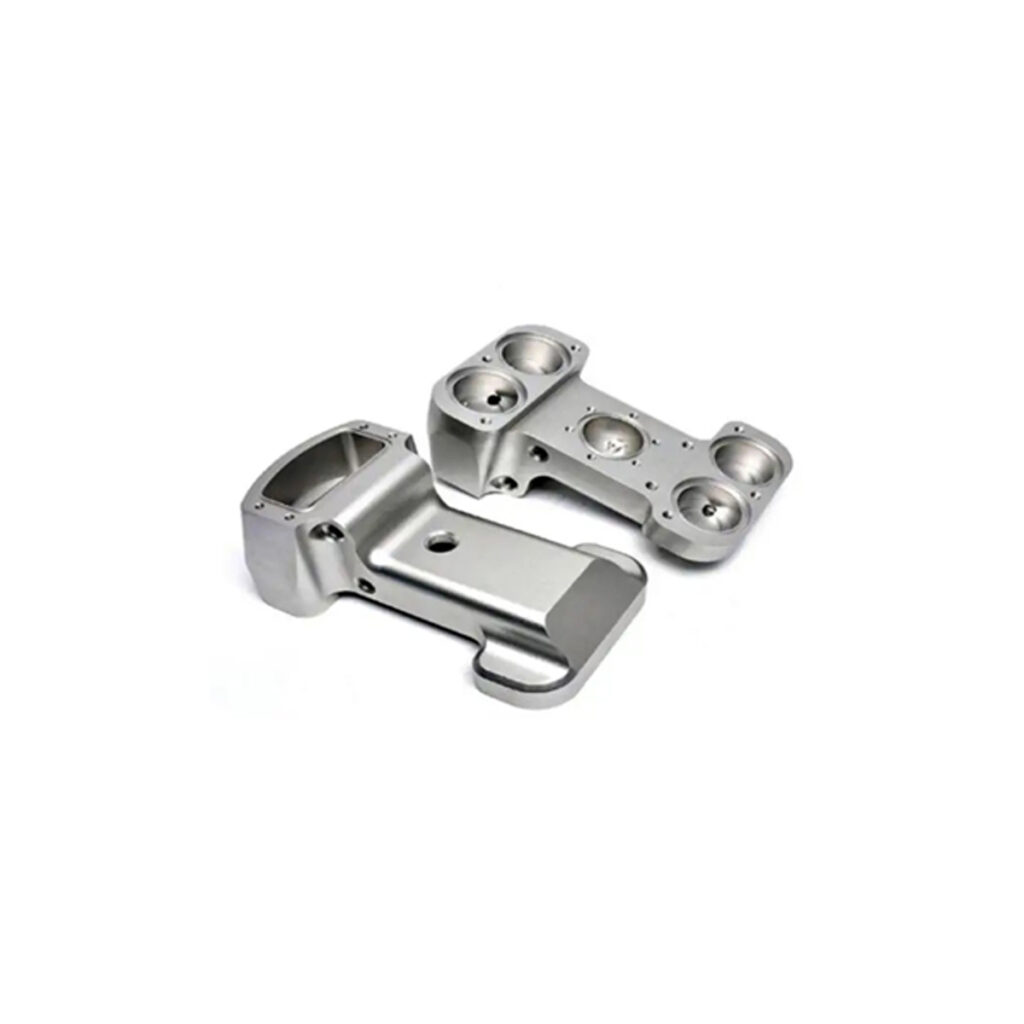In the quest for miniaturization and complexity, traditional manufacturing methods often hit a wall. Imagine trying to machine a long, slender shaft with intricate details. A conventional lathe would struggle, as cutting forces would cause the part to bend and vibrate, leading to poor surface finish and dimensional inaccuracy. This fundamental challenge is precisely what the Swiss-type automatic lathe was invented to solve.
Renowned for its unparalleled precision in producing small, complex, and slender parts, Swiss-type machining, also known as Swiss screw machining or sliding headstock turning, is a cornerstone of modern high-precision manufacturing.
This article will delve into what a Swiss-type lathe is, how it works, and unpack the key advantages that make it the go-to solution for industries where micron-level precision is non-negotiable.
Part 1: The Core Innovation – How a Swiss-Type Lathe Differs from a Conventional Lathe
To understand the precision of a Swiss-type lathe, one must first understand the limitation of a conventional lathe.
The Conventional Lathe Challenge:
In a standard CNC lathe, the workpiece is clamped at one or both ends and rotated. The cutting tool moves in to remove material. For short, stout parts, this works excellently. However, as the part becomes longer and slimmer (a high Length-to-Diameter ratio), it acts like a diving board. The cutting forces exerted by the tool cause the unsupported middle of the workpiece to deflect, vibrate (a phenomenon known as chatter), and bend. This results in:
- Tapered diameters (the part is thinner farther from the chuck).
- Poor surface finish.
- Difficulty holding tight tolerances.
- Potential for scrapping the part.
The Swiss-Type Solution: The Guide Bushing
The revolutionary innovation at the heart of a Swiss-type lathe is the guide bushing. This is a precisely machined, hardened bushing (often made of tungsten carbide) that acts as a supportive bearing for the bar stock, located mere millimeters away from the cutting tool.
Here’s how it transforms the process:
- The Bar Stock is loaded through the guide bushing.
- The Headstock, which holds the bar, slides back and forth in the Z-axis.
- The Cutting Tools are stationed radially around the guide bushing.
- During Operation, the headstock advances the bar stock through the guide bushing, presenting a short, rigid section of the material directly to the cutting tools right at the point of support.
This simple yet brilliant setup means the part being machined is always supported directly behind the cut. The cutting forces are transferred directly into the guide bushing and the machine frame, not into the unsupported length of the bar. This effectively eliminates deflection and vibration, no matter how long and slender the final part may be.
Part 2: The Anatomy of a Swiss-Type Lathe: A Symphony of Synchronized Motion
A modern CNC Swiss-type lathe is a marvel of engineering, integrating multiple functionalities into a single, highly coordinated system.
Key Components:
- Guide Bushing: The heart of the system, providing critical support.
- Sliding Headstock: Moves the bar stock in the Z-axis through the guide bushing.
- Main Spindle: Rotates the bar stock at high speeds.
- Tooling Setup: Swiss lathes feature a gang tool plate or a radial tool station with multiple tool positions, allowing drills, turning tools, and end mills to work on the part simultaneously or in rapid sequence.
- Secondary Spindle (or Sub-Spindle): This is a game-changer. Located opposite the main spindle, it can pick off the part once the front end is complete. This allows for complete machining in a single cycle. The sub-spindle holds the part, and back-working tools can then machine the back side (drilling, tapping, facing), eliminating the need for a second operation and ensuring perfect concentricity.
- Coolant System: High-pressure coolant is essential for clearing chips from the tight confines around the guide bushing and tools, ensuring tool life and surface finish.
The Machining Process:
The machine operates with incredible efficiency. While the main spindle is feeding material for a turning operation, other tools on the gang plate can be simultaneously drilling, milling flats, or cross-drilling holes. The CNC control synchronizes the headstock movement with the tool actions, allowing for complex geometries to be created in one continuous, automated cycle. The part is then picked off by the sub-spindle for back-side machining and finally cut off to drop a finished component into the parts catcher.
Part 3: The Unbeatable Advantages of Swiss-Type Machining
The unique architecture of the Swiss-type lathe translates into a powerful set of advantages for specific part families.
1. Supreme Precision for Slender Parts
This is its primary raison d’être. By eliminating deflection, Swiss machining can hold incredibly tight tolerances (often within ±0.0002 inches or ±5 microns) on parts with L:D ratios of 10:1 or even 20:1. This is simply unachievable with conventional turning.
2. Complex Geometries in a Single Setup
The combination of multiple tools and a sub-spindle means a part can be completely finished—front, middle, and back—without ever being removed from the machine. This “done-in-one” philosophy:
- Dramatically reduces cycle time by eliminating secondary operations.
- Improves accuracy by avoiding cumulative errors from multiple setups.
- Lowers labor costs through full automation.
3. Exceptional Surface Finish
The rigidity provided by the guide bushing prevents chatter, allowing for high-quality surface finishes directly off the machine. This is critical for parts like medical implants that interact with the human body or hydraulic components that require perfect seals.
4. High Efficiency and Volume Production
Once set up and programmed, a Swiss-type lathe can run unattended for hours, producing thousands of identical, precision components. The continuous bar feeder ensures material is always ready, making it ideal for high-volume production runs.
5. Minimal Material Waste
Because the material is fed incrementally and the part is cut off to a precise length, Swiss machining is very efficient with material, especially when using pre-turned bar stock. This is a significant cost-saving factor when machining expensive materials like titanium or medical-grade alloys.
Part 4: Ideal Applications: Where Swiss Machining Shines
Swiss-type lathes are not a one-size-fits-all solution; they are specialized tools that excel in specific niches.
- Medical Industry: This is the largest application area. Swiss machines produce bone screws, spinal rods, dental implants, surgical instrument shafts, and cannulated tubes (parts with a hole through the center). The demand for biocompatible materials, extreme precision, and flawless surface finishes makes Swiss machining indispensable.
- Aerospace and Defense: Critical components like hydraulic fittings, actuator pins, fasteners, and connectors—often made from tough, hard-to-machine alloys—are perfect candidates for Swiss turning.
- Electronics and Connectors: Precision pins, connectors, and sleeves used in consumer electronics and telecommunications require the intricate detailing and high-volume capability of Swiss lathes.
- Watchmaking: The industry where it all began. Swiss lathes are still used to produce the tiny, intricate screws, pins, and axles found in mechanical timepieces.
Conclusion: A Strategic Tool for Micro-Precision
The Swiss-type automatic lathe is a testament to the principle that specific challenges require innovative solutions. It is not merely a “more precise lathe,” but a fundamentally different and highly specialized machining platform designed to conquer the challenges of small, complex, and slender part manufacturing.
For industries where failure is not an option—where a part a few millimeters in size must perform a critical function under demanding conditions—the Swiss-type lathe provides the necessary combination of rigidity, complexity, and repeatability. By integrating turning, milling, drilling, and tapping into a single, synchronized operation, it delivers finished parts of exceptional quality with a level of efficiency that other methods struggle to match.
When your project involves complex, miniature components that demand the highest level of precision, partnering with a manufacturer equipped with advanced Swiss-type machining capabilities is not just a choice—it is a strategic decision for quality, reliability, and performance.


